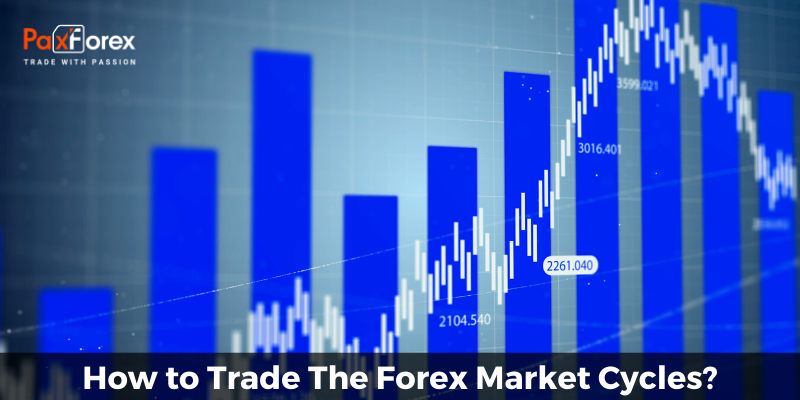
The definition of market cycles is best understood from that given by the Foundation for the Study of Cycles (FSC) Inc. According to the FSC, a market cycle is a rhythmic fluctuation in the financial markets which tends to repeat itself over time with a great degree of regularity. When a repetitive cycle is seen to occur with definable regularity and is seen to persist over a long period of time, then it cannot be reasonably ascribed to the phenomenon of chance, but can be said to be one which has a well definable pattern. The longer such a rhythm continues to occur, the less it can be described as a chance occurrence and the greater the degree of predictability.
A cycle is a recognizable price pattern or movement that occurs with some degree of regularity in a specific time period. The analysis of cycles shows us support and resistance that represent smart places to anticipate a reaction in the price of an asset, and therefore represent a basic tool in technical analysis. Cycle lengths are measured from trough to trough, the most stable portion of a cycle. We can use market cycles to forecast the evolution of financial markets, i.e. we can predict when the low and high of a cycle will occur. Using this information, we can thereby outline our trading strategy.
When a particular currency is found to turn stronger (or weaker) against multiple currencies within a short time window, the probability of a strong directional move increase significantly. This makes the forex time cycle a great complimentary tool for any primary trading signals one employed. By looking into all possible combinations of time cycles in the near term, the strongest cycle can be identified that, should one choose to blindly follow the turns of the particular cycle, one can outperform all other purely time based cycles.
In the absence of any trend in the market, currency pairs tend to be range bound. They fluctuate between predictable daily highs and lows. The bulls try to raise the price, but they immediately meet with resistance from the bears. If the price moves downwards beyond a given range, once again the forces of equilibrium raise the prices back to the equilibrium. In such scenarios, traders should make multiple short-term trades. They should sell after the movement of just a few pips because in case they do not, the prices will fall back. Range bound movements typically end in a breakout which is the second stage of this cycle.
Although not always, cycles exist in all markets. For the smart money, the accumulation phase is the time to buy because values have stopped falling and everyone else is still bearish. These types of investors are also called contrarians since they are going against the common market sentiment at the time. These same folks sell as markets enter the final stage of mark-up, which is known as the parabolic or buying climax. This is when values are climbing fastest and sentiment is most bullish, which means the market is getting ready to reverse.







